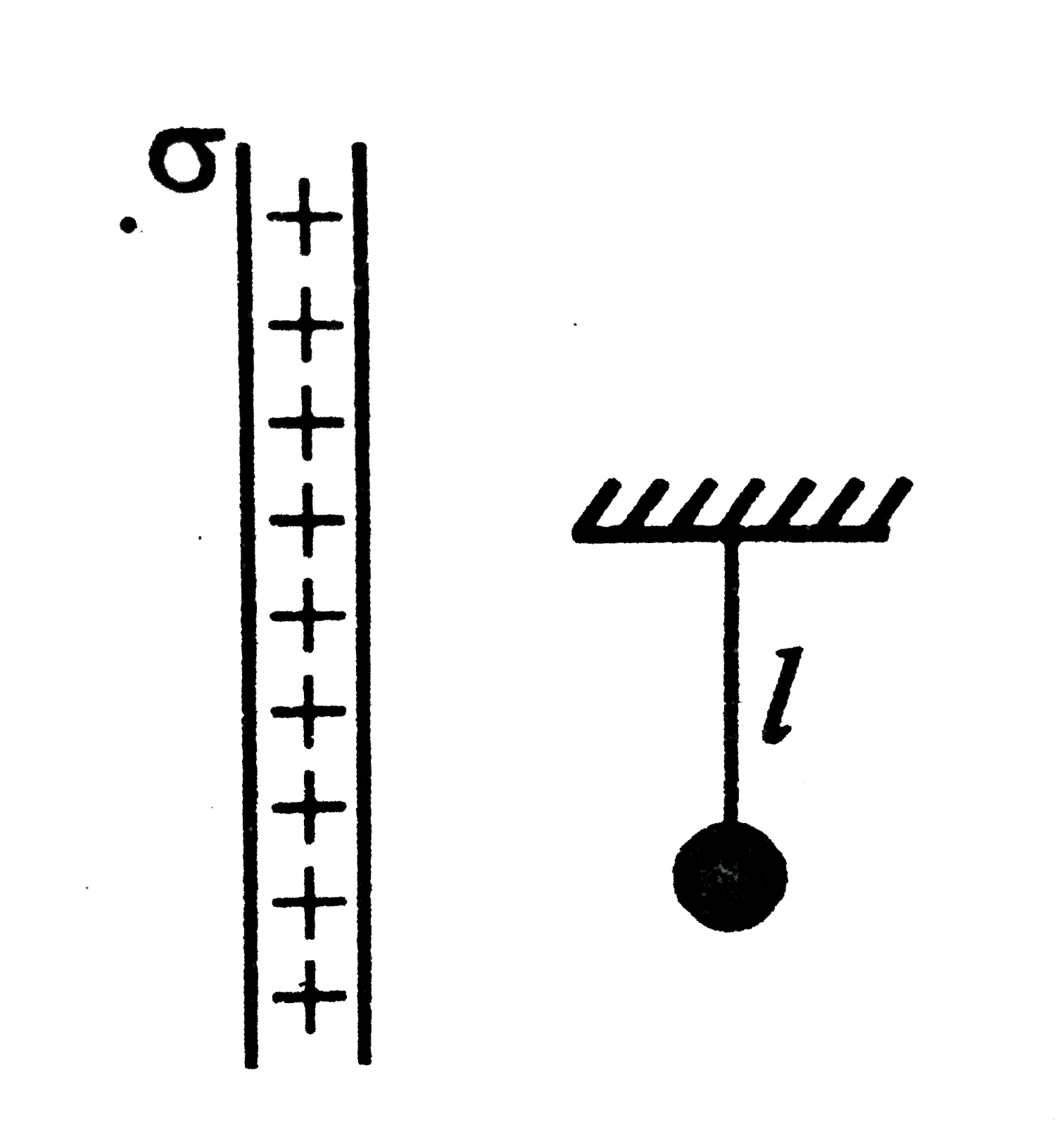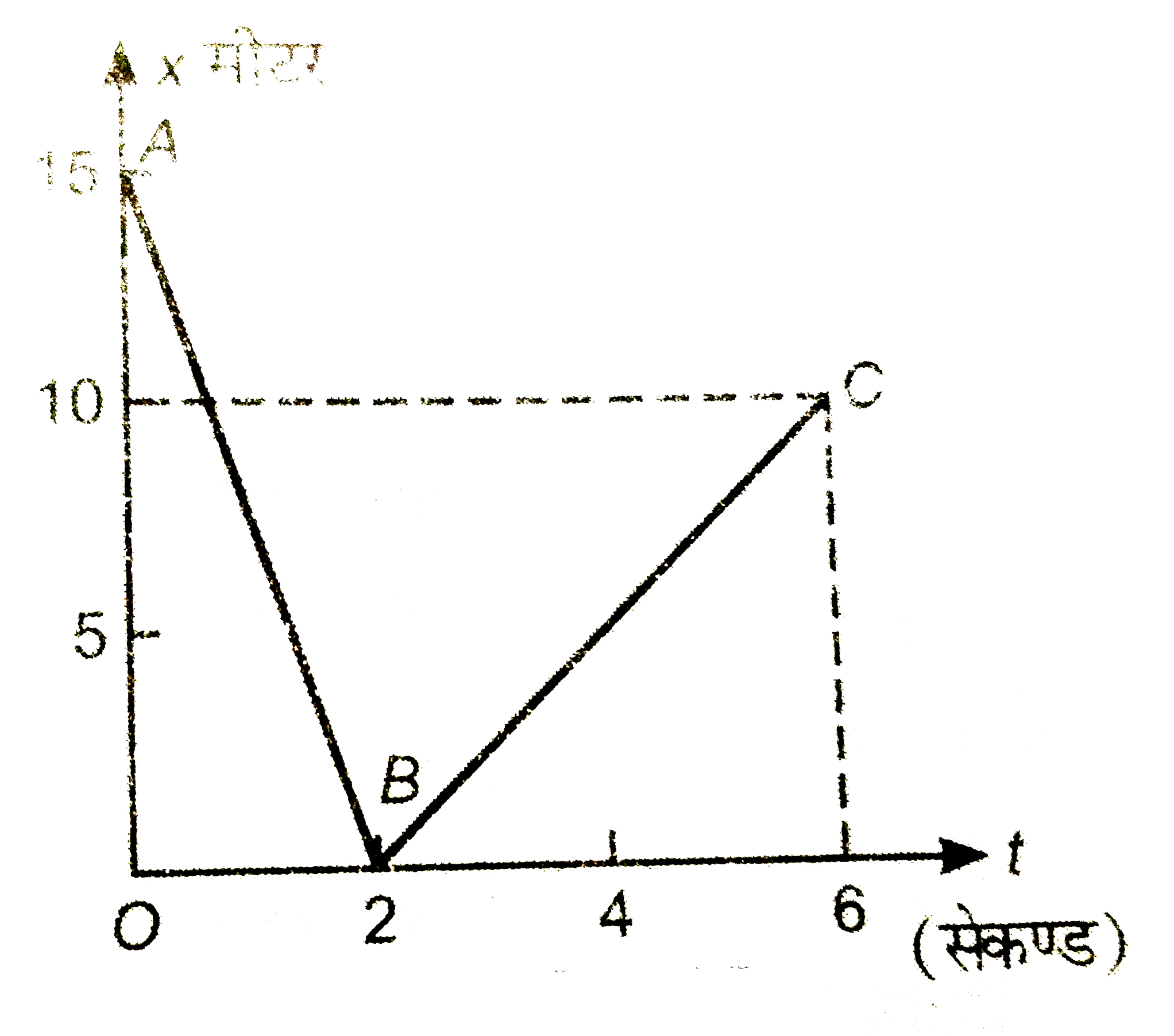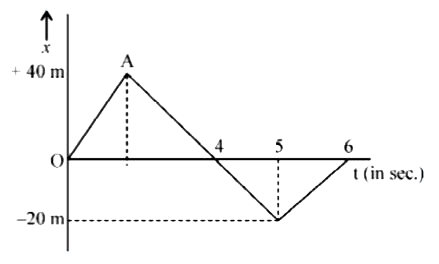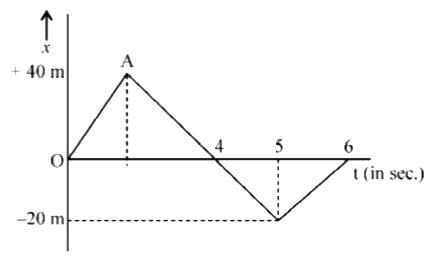Position-time graph of a particle in motion is shown in fig. Calculate -

(i) Total distance covered
(ii) Displacement
(iii) Average speed
(iv) Average velocity. Solution in Gujrati
(i) Total distance tavelled ltBrgt =xOA+xAB+xBC+xCD
=40+40+20+20=120 m

(ii) Displacement = final position - initial position
=xD−xO=0−0=0
(iii) Average speed = Total distanceTotal time=1206=20m/s
(iv) Average velocity = displacementTime=06=0m/s
Topper's Solved these Questions
- KINEMATICS (MOTION ALONG A STRAIGHT LINE AND MOTION IN A PLANE)BOOK - ALLEN CHAPTER - KINEMATICS (MOTION ALONG A STRAIGHT LINE AND MOTION IN A PLANE)EXERCISE - BEGINNER S BOX-6
9 Videos
- KINEMATICS (MOTION ALONG A STRAIGHT LINE AND MOTION IN A PLANE)BOOK - ALLEN CHAPTER - KINEMATICS (MOTION ALONG A STRAIGHT LINE AND MOTION IN A PLANE)EXERCISE - BEGINNER S BOX-7
8 Videos
- KINEMATICS (MOTION ALONG A STRAIGHT LINE AND MOTION IN A PLANE)BOOK - ALLEN CHAPTER - KINEMATICS (MOTION ALONG A STRAIGHT LINE AND MOTION IN A PLANE)EXERCISE - BEGINNER S BOX-4
6 Videos
- KINEMATICSBOOK - ALLEN CHAPTER - KINEMATICSEXERCISE - EXERCISE-2
89 Videos
- MISCELLANEOUSBOOK - ALLEN CHAPTER - MISCELLANEOUSEXERCISE - Question
1 Videos
Similar Questions
A particle is projected vertically upwards from ground with velocity 10 m/s. Find the time taken by it to reach at the highest point ?
View SolutionA football player kicks a ball at an angle of 30∘ with an initial speed of 20 m/s. Assuming that the ball travels in a vertical plane, calculate (a) the time at which the ball reaches the highest point (b) the maximum height reached (c) the horizontal range of the ball (d) the time for which the ball is in the air, (g=10m/s2)
View SolutionA particle starts from the rest, moves with constant acceleration for 15s. If it covers s1 distance in first 5s then distance s2 in next 10s, then find the relation between s1&s2.
View SolutionA student performs an experiment to determine how the range of a ball depends on the velocity with which it is projected. The "range" is the distance between the points where the ball lends and from where it was projected, assuming it lands at the same height from which it was projected. It each trial, the student uses the same baseball, and launches it at the same angle. Table shows the experimental results.
∣∣ ∣ ∣ ∣ ∣ ∣∣TrailLaunch speed(m/s)Range(m)110822031.833070.7440122.5∣∣ ∣ ∣ ∣ ∣ ∣∣
Based on this data, the student then hypothesizes that the range, R, depends on the initial speed v0 according to the following equation : R=Cvn0, where C is a constant and n is another constant.
Based on this data, the best guess for the value of n is :-
View SolutionA simple pendulum of length l and bob mass m is hanging in front of a large nonconducting sheet having surface charge density σ. If suddenly a charge +q is given to the bob & it is released from the position shown in figure. Find the maximum angle through which the string is deflected from vertical .
 .
.
View SolutionVelocity time graph for the motion of a particle along a straight line is as shown in figure. Average speed of the particle for the whole motion is:
View SolutionWhich of the following can sometimes be 'zero' for a moving body ? (i) average velocity (ii) distance travelled (iii) average speed (iv) displacement
View SolutionPosition-time graph of a particle in motion is shown in fig. Calculate - (i) Total distance covered (ii) Displacement (iii) Average speed (iv) Average velocity.
View SolutionA particle moves on straight line according to the velocity-time graph shown in fig. Calculate -

(i) Total distance covered
(ii) Average speed
(iii) In which part of the graph the acceleration is maximum and also find its value.
(iv) Retardation
View SolutionX -अक्ष पर गतिमान एक कण का स्थिति समय (x−t) ग्राफ चित्र में प्रदर्शित है। ज्ञात कीजिए-
(i) t=0 सेकण्ड से t=2सेकण्ड तक के समयन्तराल में कण का विस्थापन, तय दूरी, औसत चाल, औसत वेग।

(i) t=0 सेकण्ड से t=6 सेकण्ड तक के समयान्तराल में कण का विस्थापन, तय दूरी, औसत चाल एवं औसत वेग।
(iii) t=1 सेकण्ड तथा t=3 सेकण्ड पर कण का वेग।
View Solutions-t graph of a particle in motion is shown in Fig. Calculate Total covered distance
View Solutions-t graph of a particle in motion is shown in Fig. Calculate

Average speed
View Solutions-t graph of a particle in motion is shown in Fig. Calculate

Average velocity
View SolutionA particle in motion covers half of a circular path of radius r in time t . Find the average speed and average velocity of the body.
View SolutionConsider the motio of the tip of the minute hand of a clock . In one hour (i) the displacement is zero (ii) the distance covered is zero (iii) the average speed is zero (iv) the average velocity is zero
View Solution
